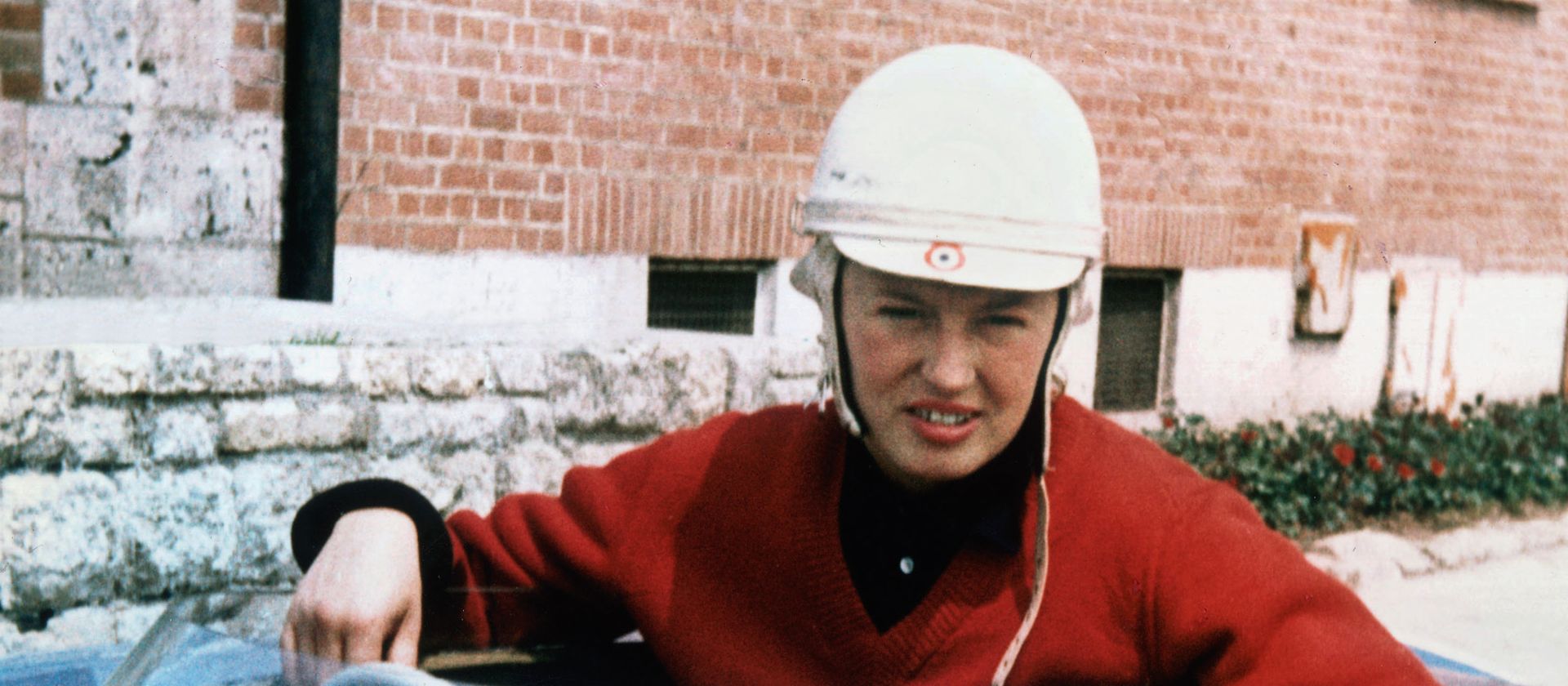Is Porsche a She?
Annie Bousquet was in fine form. She had merely broken her leg, not her neck. Her telegraph to Zuffenhausen read “In good spirits.” She had just set a speed record on the Autodrome Montlhéry in a Porsche 550 Spyder. When she attempted to break the best hour mark as well, one of the tires blew out at 200 kmh. She survived that, but a year later, on June 30, 1956, she lay motionless on a harvested field of wheat in Reims. Death came in the seventeenth lap of the twelve-hour race. This time it was her neck.
Triumph and tragedy lie so closely together. Invariably and inextricably. Victor and victim. The wreck before the Muizon curve in Reims recalls the smashed 550 Spyder of James Dean at the junction of Highways 41 and 466 near Cholame, California.

Dr. Josef Arweck
EditorThis willingness to push limits in pursuit of victory, knowing the risks, is how legends are born. The Porsche legend. Men like James Dean and Steve McQueen keep them alive. But it’s women like Annie Bousquet who displayed heroics of their own early on and who personified the essence of Porsche: restless, active, independent, nonconforming, rebellious, flexible, self-assured, and individualistic—different.
Women and Porsche. A movement that runs through all seventy years, from the daredevil to the companion in the passenger seat to the self-dramatizing declaration of love in red lipstick on the rear fender of a Carrera. A car as a vehicle for assertiveness, emancipation, and liberal expression—to this day. In 1949 Jolanda Tschudi, a young woman from Zurich high society who flew gliders and traveled in Africa, was the first woman to buy the first standard-series Porsche 356 with the Beutler Brothers chassis.
The oldest Porsche 356 “No. 1” prototype of 1948 was purchased by a woman as well—Elisabeth Spielhofer, an actress and performer who, like Tschudi, was a native of Switzerland. “A Porsche 911 has a body,” said Ferdinand Alexander Porsche in 1963. “It’s a she.” According to Porsche 911 author Ulf Poschardt, famous women like fashion designer Jil Sander and tennis star Martina Navratilova identify with “those avenues of freedom still depicted in otherwise egalitarian common parlance as masculine prerogatives.” Porsche brand ambassadors Maria Sharapova and Mark Webber met for a speed-dating session in a GT2 RS. In China nearly one-third of Porsches are bought by women, and 42 percent of the country’s 911 drivers are female. Along similar lines, over the past four years the share of women in Porsche’s technical commercial training programs has risen from 6 to 35 percent. And since 2012 the company has increased its share of female employees from 12.8 to 15.5 percent.
Annie Bousquet, to whom this issue of Christophorus dedicates an article, got into racing after a skiing accident in Sestriere, where she met the already famous race-car driver Alberto Ascari at a hotel bar. Happenstance. But also the breaking of a taboo. In the absence of social conventions. Or role models. Just with an appreciation of the moment and what it can bring. Like the cover of the first issue of Christophorus, published in 1952: no chauvinistic depiction of the economic miracle arising from the ruins of madness, but instead, quite matter-of-factly, an unconventional act—blue sky, mountains, a silver matte Porsche 356 A Coupé on a light blanket of snow. Next to it a person wearing a colorful knit sweater, kneeling to lace a ski boot, enjoying the moment, entirely at ease and free. A woman.
Wherever you have come from, wherever you are going, our Christophorus will accompany you.
